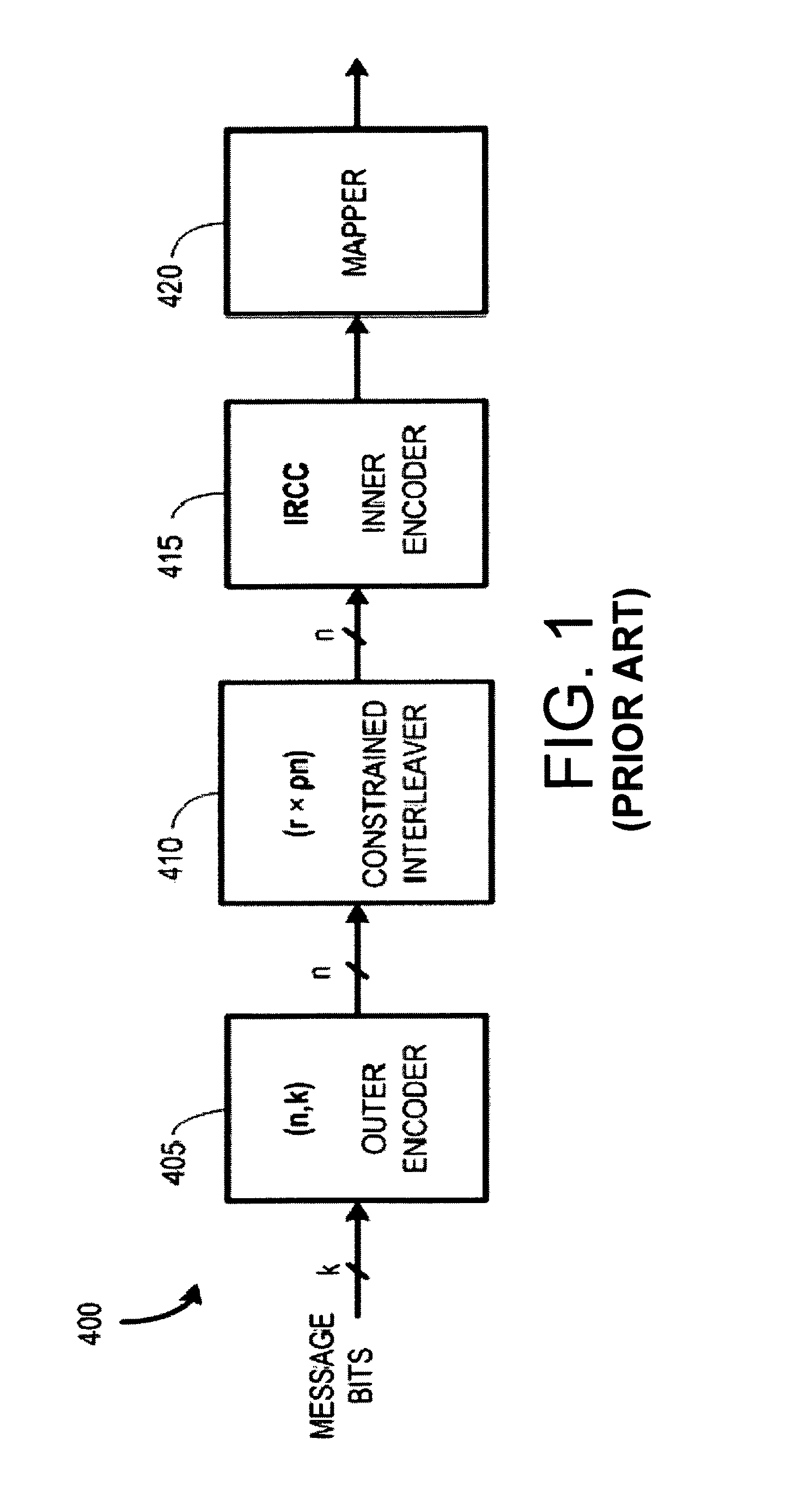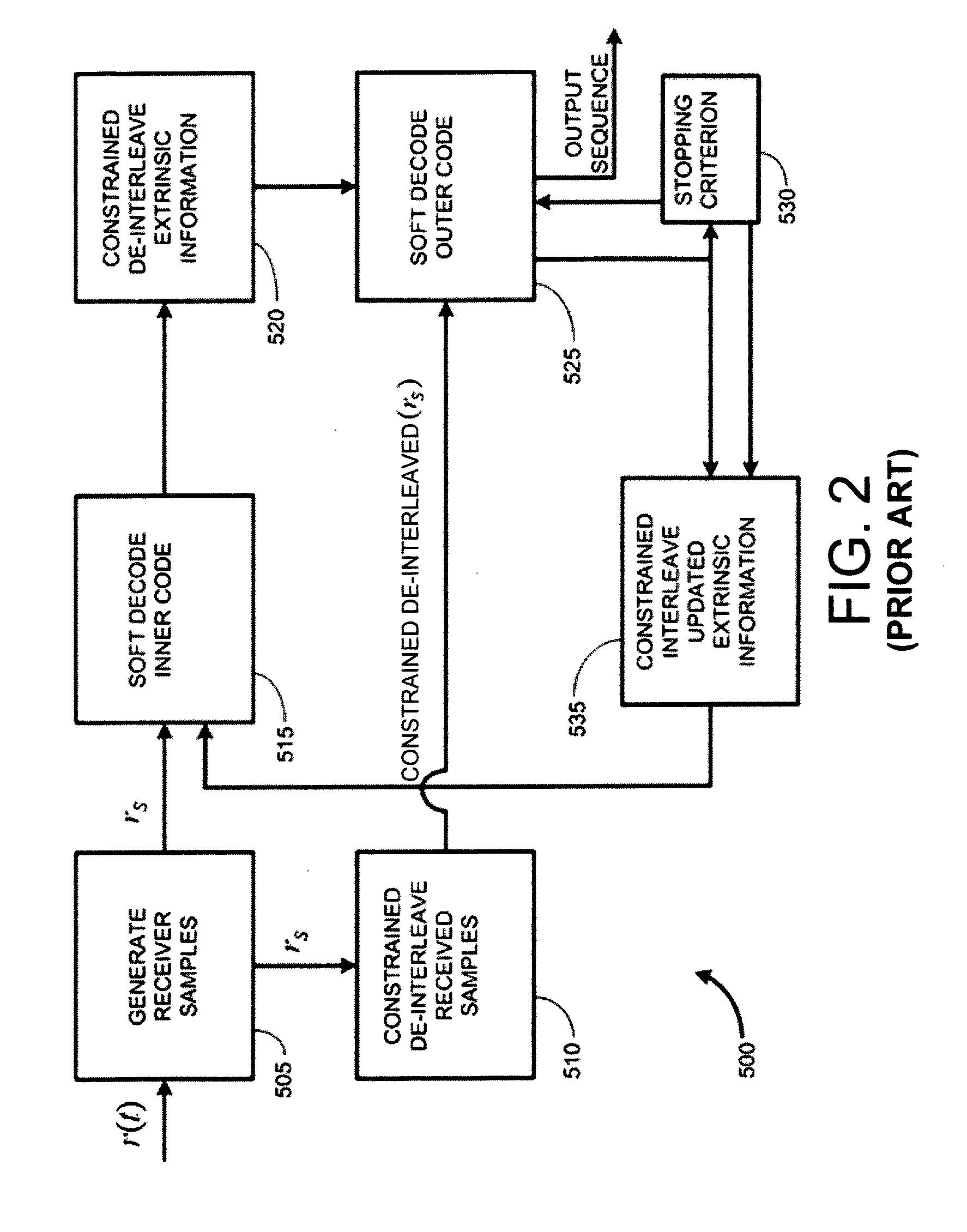Constrained interleaving for 5G wireless and optical transport networks
a wireless and optical transport network, constrained technology, applied in the direction of coding, error correction/detection using convolutional codes, error correction/detection using turbo codes, etc., can solve the problems of high data rate, high hardware complexity of 4g lte ctc, etc., to increase the performance and data rate of the optical communication system
- Summary
- Abstract
- Description
- Claims
- Application Information
AI Technical Summary
Benefits of technology
Problems solved by technology
Method used
Image
Examples
Embodiment Construction
[0078]Throughout this written description various mathematical algorithms will be presented in the form of block diagrams. It is to be understood that in any such cases, the block diagrams can be viewed as hardware blocks or logic blocks that could be carried out in software. Likewise, especially in hardware implementations, a given block in the any block diagram herein could be embodied using two or more separate hardware sub- blocks. Hence all such modifications are contemplated as ways to implement various aspects and embodiments of the present invention. Also, it should be recognized that any block diagram whose operation is described herein can be viewed as a flow chart, thereby describing a method in addition to a system or an apparatus.
Constrained Interleaver Mathematical Notation
[0079]A single frame of a CTBC code can be modeled starting from a set of ρ independent message blocks, each of length k, mj=(mj1,mj2, . . . mjk), j=0,2, . . . , ρ−1, where ρ is the integer number of...
PUM
 Login to View More
Login to View More Abstract
Description
Claims
Application Information
 Login to View More
Login to View More - R&D
- Intellectual Property
- Life Sciences
- Materials
- Tech Scout
- Unparalleled Data Quality
- Higher Quality Content
- 60% Fewer Hallucinations
Browse by: Latest US Patents, China's latest patents, Technical Efficacy Thesaurus, Application Domain, Technology Topic, Popular Technical Reports.
© 2025 PatSnap. All rights reserved.Legal|Privacy policy|Modern Slavery Act Transparency Statement|Sitemap|About US| Contact US: help@patsnap.com



